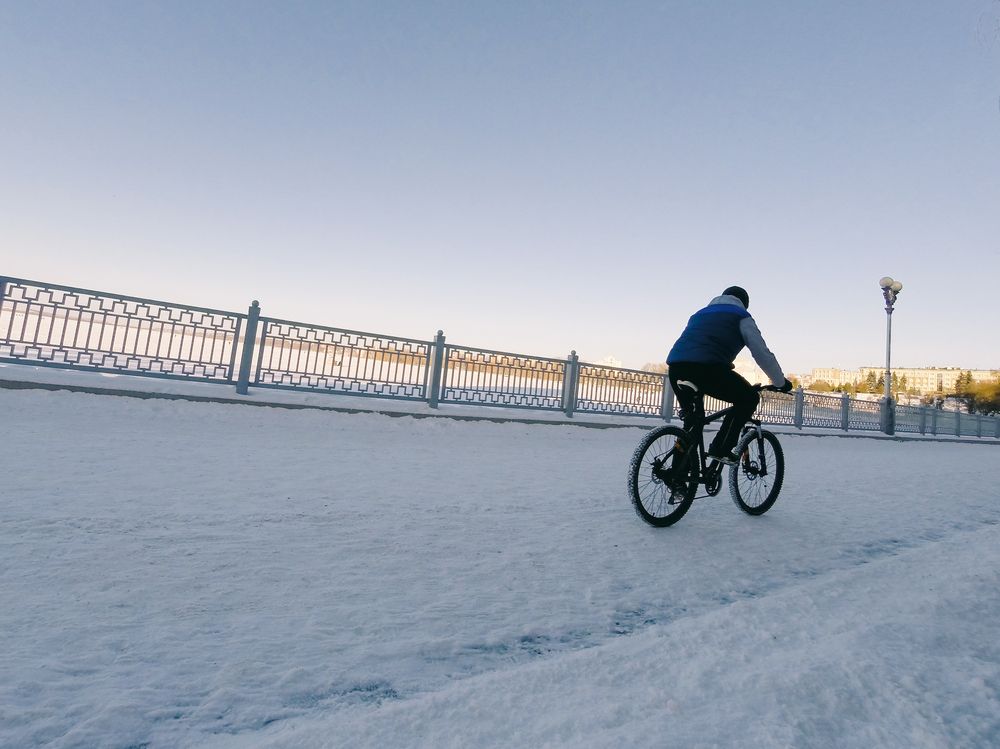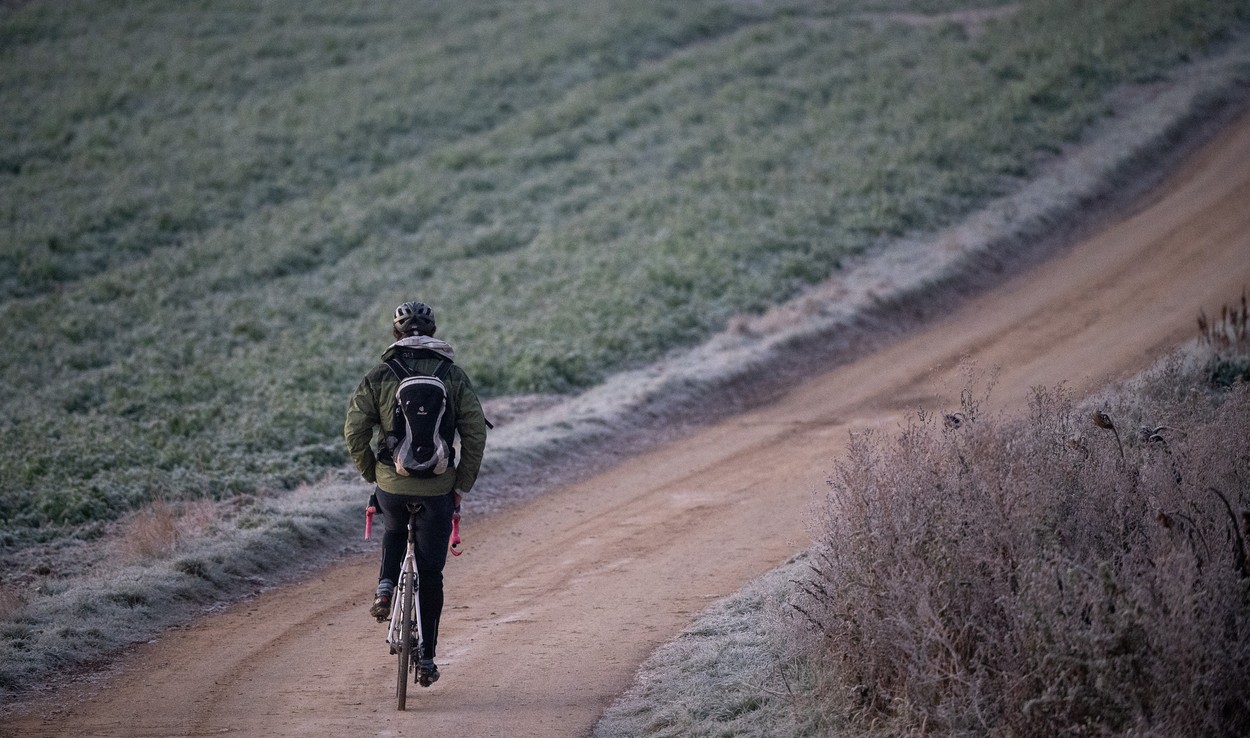While some of us put our bikes away for winter to avoid Jack Frost’s bite, die-hards continue to venture out year-round. Riding when the mercury dips has its challenges, but there are several tips and tricks for preventing cold feet and hands.

Why do hands and feet get cold?
Other than the obvious fact that it’s cold outside, the answer lies in how your body regulates its internal temperature. When the temperature drops, an internal alarm goes off, directing blood to your core to protect vital organs and keep them working normally. This causes blood vessels that serve your hands and feet to constrict, redirecting blood flow away from them and toward your core. Not everyone is affected equally; some of us are more prone to cold hands and feet. If this is you, you know what I mean.
Research shows that women are more likely to suffer from freezing temperatures at a faster rate than men. However, no one should ignore frozen extremities. Other than ruining your ride, prolonged exposure can lead to potentially more severe medical issues, such as nerve damage and frostbite. There are several things you can do to retain core temperatures and prevent freezing feet and hands.
Keep your torso warm
We already know that a drop in your body’s core temperature arouses the troops and sends reinforcements to your torso to keep your body warm and operating normally. Keeping your core warm in the first place will prevent or delay the alarm from going off. This means investing in quality base layers, and particularly those with wicking and temperature-regulating properties that draw sweat away from the skin. Get into the habit of reading garment product labels and don’t forget capable natural fibres too, such as Merino wool.

Look for base layers with a windproof panel on the chest and sleeves. Not all cycling jerseys provide wind protection, but smart base layer choices like these can level the playing field. Wind chill is unavoidable on the bike, especially when winter riding. This makes icy air temperatures feel much more frigid. Stopping the cold at the source will help keep you at a comfortable temperature.
Vests are a powerful tool against wind chill and help your body stay warm. They are lightweight, convenient, compact, and easy to store in a rear jersey pocket if needed. Even wear it below a jersey as an extra wind protection layer. Starting to feel cold? Pedal faster! Simply picking up the pace will increase your blood flow and internal temperature naturally. Be sure to replace consumed calories during the ride and remain hydrated. Both are additional beneficial aids to avoid core temperature drops.
Pick the right cycling gloves
Not all cycling gloves are created equal, and the best defence against freezing temperatures is a pair that combines warmth, breathability, and freedom of movement for your fingers. In our modern day of screens, don’t forget to look for tactile finger tips. Today’s technical fabrics mean thicker is not better. Avoid bulk. You need to safely and comfortably shift, brake and control your bike.
Confirm that your pair has a wind, waterproof and breathable membrane (water resistant? Not the same thing!) if you live and ride in a wet part of the world. And read the fine print for recommended temperature range. A long glove cuff that overlaps that of your jersey sleeve is a bonus for keeping nippy breezes from getting inside.
If you are constantly plagued by icy hands, instead of traditional gloves, look for lobster-style ones, such as the Giro 100 Proof Glove, that group your fingers together to stay warmer. They’ll bring out your inner Mr. Spock, and providing safety and warmth in numbers aids in heat retention.
If you aren’t finding what you want in the cycling section, mosey over to skiing for more options. Since dressing in layers keeps your body temperature stable, do the same for your hands by layering with lightweight silk or wool liners under your gloves.
Looking to keep your hands noticeably warmer? Treat yourself to a pair of gloves with built-in heating elements like the Sealskinz Waterproof Heated Cycling Glove. Just charge them up and control the amount of heat you require. Amazing! If you have a long ride planned, purchase a few disposable chemical hand warmers. You know, the ones you break and shake to activate? One on the backside of each glove will keep your hands toasty and warm for at least a few hours.
Protect and cover your feet
Summer shoes are designed to keep your feet cool. Not the best feature to have in the winter months. If you only have one pair of cycling shoes in your wardrobe, cover the vents on the bottom of the sole with heavy duct tape to keep your feet warm and the airflow to a minimum. Go a step further by repeating the process on the inside under the footbed and don’t forget those cleat holes.
Some recommend using Blu Tack instead of tape, but I personally wouldn’t want the challenge of removing it once the weather improves. But you can decide for yourself. If you have a 3D printer at your service and are handy with that type of thing, why not make your own vent covers to match your shoes?
And did you know that dedicated winter cycling shoes actually exist? Designed like winter boots, they will keep your feet dry, warm, and cosy on the coldest of days. Shimano’s SH-MW701 shoes are a perfect example. If your climate warrants them, they are a worthy investment against cold feet.
If you don’t have dedicated winter cycling shoes in your footwear arsenal, shoe covers with a waterproof and breathable membrane are essential. Thermal socks are a must for cold-weather riding, and before slipping on your shoe covers, go old-school by taking an old pair of winter wool socks and placing them over your shoes. This means cutting a hole in the socks for your cleats of course, and this might require a larger shoe cover size than usual to go over the top. Avoid a tight fit, as this can restrict blood flow and cause numb feet.
If windchill on a winter ride is your number-one nemesis, wrap your toes, with socks on, in some aluminium foil to prevent frozen feet. Don’t cover more than your toes and forefoot as it won’t be very breathable, and damp feet are a no-no in winter weather. But the aluminium foil will keep in heat and create a barrier against wind. Placing toe covers over your shoes before your overshoes is another option.
Remember those individual hand warmers we activated to place in your gloves? Do the same for your feet. Put them between your shoes and your shoe covers. As close as possible to the toes is best. Or look for USB-battery-heated overshoes; they exist too.
Find a cosy coffee shop
If all else fails, find a cosy coffee shop after several hours of cycling where you can enjoy your favourite hot beverage and a delicious pastry as you warm up. If you have extra cold feet, remove your shoes for a few minutes while you are inside. If your gloves or overshoes are damp, take them off and place them on a nearby radiator. Both will be agreeably toasty when you are ready to get going again, but keep an eye on them and make sure the radiator isn’t too hot either. You don’t want to ruin your expensive gear.






